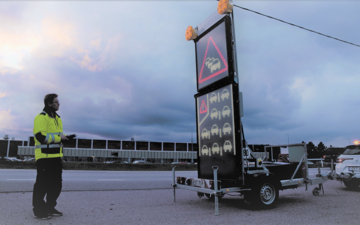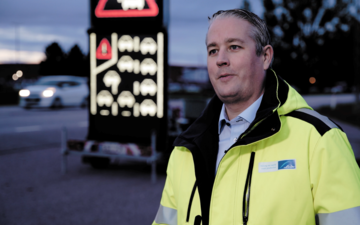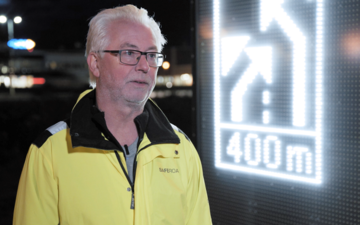The HYMERA® fuel cell generator is also compact and silent. The hydrogen it uses isn’t burned to produce electricity. Rather, the gas reacts with oxygen, with water vapor as the only by-product.
“This is a great example of how Linde works with our clients to find solutions to help them reduce their environmental impact,” says Resare.
“Anyone who is using the old, traditional diesel generators should consider using this application with hydrogen because it's emissions free.”
Following a number of successful tests carried out together with Linde, Saferoad has so far installed the GENIE®/HYMERA® hydrogen solution on six lighted road signs.
From Carlsson’s point of view, the benefits of switching from diesel generators to hydrogen fuel cells are obvious.
“The GENIE® hydrogen solution from Linde means lower maintenance costs, no noise, and it’s better for the environment since there are no emissions,” he says.
“We have about 20 signs today in Sweden and hopefully we will have all of them running with GENIE® hydrogen in the future.”
Read more about exciting stories on hydrogen applications
Text: Carina Aspenberg, Anna Hastings












